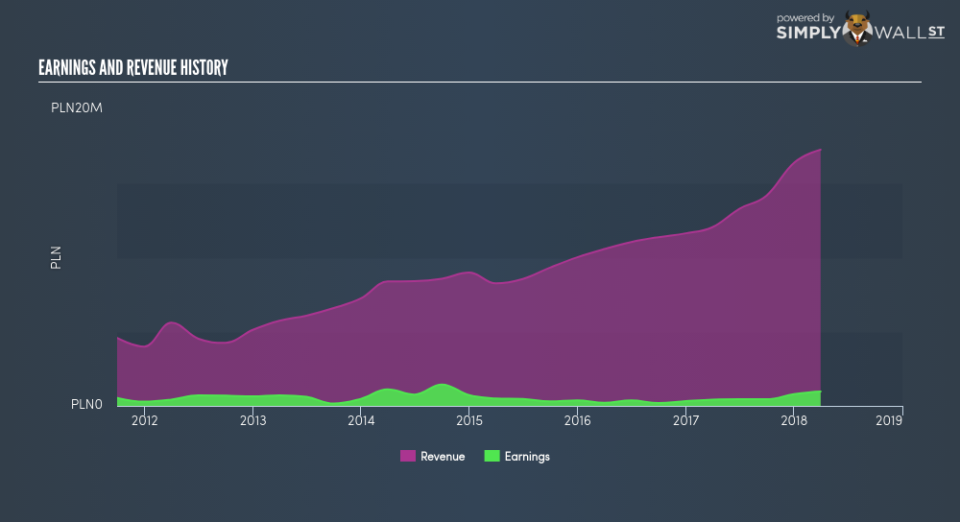Does Korbank SA’s (WSE:KOR) Recent Track Record Look Strong?

Assessing Korbank SA’s (WSE:KOR) performance as a company requires looking at more than just a years’ earnings data. Below, I will run you through a simple sense check to build perspective on how Korbank is doing by comparing its most recent earnings with its historical trend, in addition to the performance of its telecom industry peers. View out our latest analysis for Korbank
Did KOR beat its long-term earnings growth trend and its industry?
KOR’s trailing twelve-month earnings (from 31 March 2018) of zł976.27k has more than doubled from zł319.05k in the prior year. Furthermore, this one-year growth rate has exceeded its 5-year annual growth average of -2.11%, indicating the rate at which KOR is growing has accelerated. What’s enabled this growth? Let’s take a look at whether it is merely owing to industry tailwinds, or if Korbank has seen some company-specific growth.
Over the last few years, Korbank top-line expansion has overtaken earnings and the growth rate of expenses. Though this has led to a margin contraction, it has lessened Korbank’s earnings contraction. Inspecting growth from a sector-level, the PL telecom industry has been enduring some headwinds over the past year, leading to an average earnings drop of -18.09%. This is a significant change, given that the industry has been delivering a positive rate of 8.77%, on average, over the last five years. This shows that any near-term headwind the industry is enduring, the impact on Korbank has been softer relative to its peers.
In terms of returns from investment, Korbank has not invested its equity funds well, leading to a 11.87% return on equity (ROE), below the sensible minimum of 20%. However, its return on assets (ROA) of 6.28% exceeds the PL Telecom industry of 4.35%, indicating Korbank has used its assets more efficiently. And finally, its return on capital (ROC), which also accounts for Korbank’s debt level, has increased over the past 3 years from 7.75% to 10.32%. This correlates with a decrease in debt holding, with debt-to-equity ratio declining from 49.00% to 22.90% over the past 5 years.
What does this mean?
Korbank’s track record can be a valuable insight into its earnings performance, but it certainly doesn’t tell the whole story. Companies that have performed well in the past, such as Korbank gives investors conviction. However, the next step would be to assess whether the future looks as optimistic. I recommend you continue to research Korbank to get a better picture of the stock by looking at:
Future Outlook: What are well-informed industry analysts predicting for KOR’s future growth? Take a look at our free research report of analyst consensus for KOR’s outlook.
Financial Health: Is KOR’s operations financially sustainable? Balance sheets can be hard to analyze, which is why we’ve done it for you. Check out our financial health checks here.
Other High-Performing Stocks: Are there other stocks that provide better prospects with proven track records? Explore our free list of these great stocks here.
NB: Figures in this article are calculated using data from the trailing twelve months from 31 March 2018. This may not be consistent with full year annual report figures.
To help readers see pass the short term volatility of the financial market, we aim to bring you a long-term focused research analysis purely driven by fundamental data. Note that our analysis does not factor in the latest price sensitive company announcements.
The author is an independent contributor and at the time of publication had no position in the stocks mentioned.

